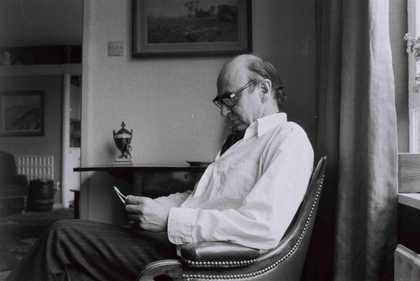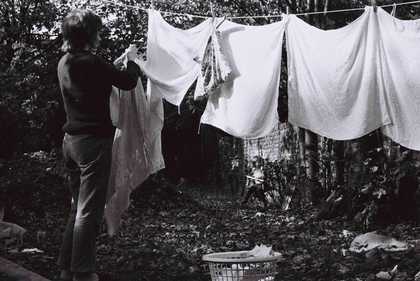This series dedicated to the pioneering work of this singular but little-known artist opens with a programme of Lange’s early films showing his incipient interest in the issues of social class and labour, recurrent themes in his work throughout the 1970s when the artist was most active. The first film Lange ever made after abandoning his practice as a sculptor, Social Consideration, Communication and Observation 1971, was never shown at the time. Studies of Family Groups 1972 featured in the seminal exhibition A Survey of the Avant-Garde in Britain, organised by Rosetta Brooks and Sigi Krauss at Gallery House in London in 1972.

Darcy Lange
Studies of Family Groups (Basil Cox) 1972
photographic still
Courtesy Govett-Brewster Art Gallery and Darcy Lange Estate
Programme
Darcy Lange, Social Consideration, Communication and Observation, UK 1971, Super 8 transferred to digital, colour, silent and sound, 24 min (12 min selection)
This series is comprised of six films, each lasting 3–8 minutes, made of a single shot or using minimal in-camera editing. The studies include: a woman putting out her washing in London, hardware store employees in South Kensington, London, farmers burning wheat in Kent, a man milking cows in Sussex, a cattle auction in a market outside Bradford and a transport café called Pini’s Restaurant in London.
The Transport Café, ‘Pini’s Restaurant’, sound, 3 min
A Cattle Auction in a Market Outside, sound, 3 min
Woman Putting out her Washing, silent, 3 min
Farmers Burning Wheat, sound, 3 min
Darcy Lange, Studies of Family Groups, UK 1972, 16mm transferred to digital, black and white, sound, 65 min (32 min selection)
‘The intention of this series is to make a natural observation of people entertaining (eating and drinking) among their friends. There are three different classes of people represented: middle class, working class and agricultural worker farmer [never realised]. The films hope to show interesting things about society, personalities, and mannerisms, etc. The study is from an objective standpoint and almost from a still life approach. Structure – each film is 30 minutes in length. The first eight minutes is filmed with a long shot, the camera held on a fixed frame. The camera zooms in gradually after the eight minutes, following the conversation and actions until the last eight minutes when it returns to its original composition.’
Darcy Lange
This series is copmrised of two studies: Basil Cox, filmed in Maida Vale, London, and Mr. and Mrs. Mates and Family, filmed in Kent House, Pimlico, London.
Mr. and Mrs. Mates and Family, 32 min
Introduced by Mercedes Vicente, series curator, and Simon Rees, Director of Govett-Brewster Art Gallery
All works in this programme courtesy the Darcy Lange Estate from material preserved and made available by Ngā Taonga Sound & Vision.

